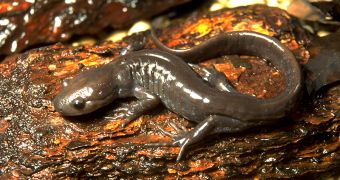It may very well be that bionic limbs are fairly efficient in terms of helping disabled people carry on with their daily routine, yet researchers have not yet lost hope that humans could one day compel their bodies to regrow whatever limbs they happened to lose.
In fact, scientists at Australia's Monash University now say that, according to their investigations, salamanders hold the key to unlocking the aforementioned ability in humans.
Nature enthusiasts probably know that, when left without a limb, these creatures do not need all that much time to regrow it.
The animals are also capable of regenerating their own spinal cords, their brain tissue and, should circumstance demand for it, their hearts, Daily Mail reports.
Salamanders owe this ability of theirs to a set of specialized immune cells named macrophages, the Monash University researchers say.
Thus, experiments have shown that, when left without these cells, the animals stopped regrowing their limbs and repairing whatever damaged tissues needed repairing.
In fact, they became fairly similar to humans, meaning that the wounds they were left with got covered with scar tissue.
“Previously, we thought that macrophages were negative for regeneration, and this research shows that that's not the case - if the macrophages are not present in the early phases of healing, regeneration does not occur,” Dr. James Godwin says.
Now that the scientists have identified the biological mechanisms that make it possible for salamanders to piece themselves together, they hope that it will not be long until they figure out how to use their findings to help human patients do the same.
As Dr. James Godwin put it, “We need to find out exactly how these macrophages are contributing to regeneration. Down the road, this could lead to therapies that tweak the human immune system down a more regenerative pathway.”
“We need to know exactly what salamanders do and how they do it well, so we can reverse-engineer that into human therapies,” he went on to say.

 14 DAY TRIAL //
14 DAY TRIAL //